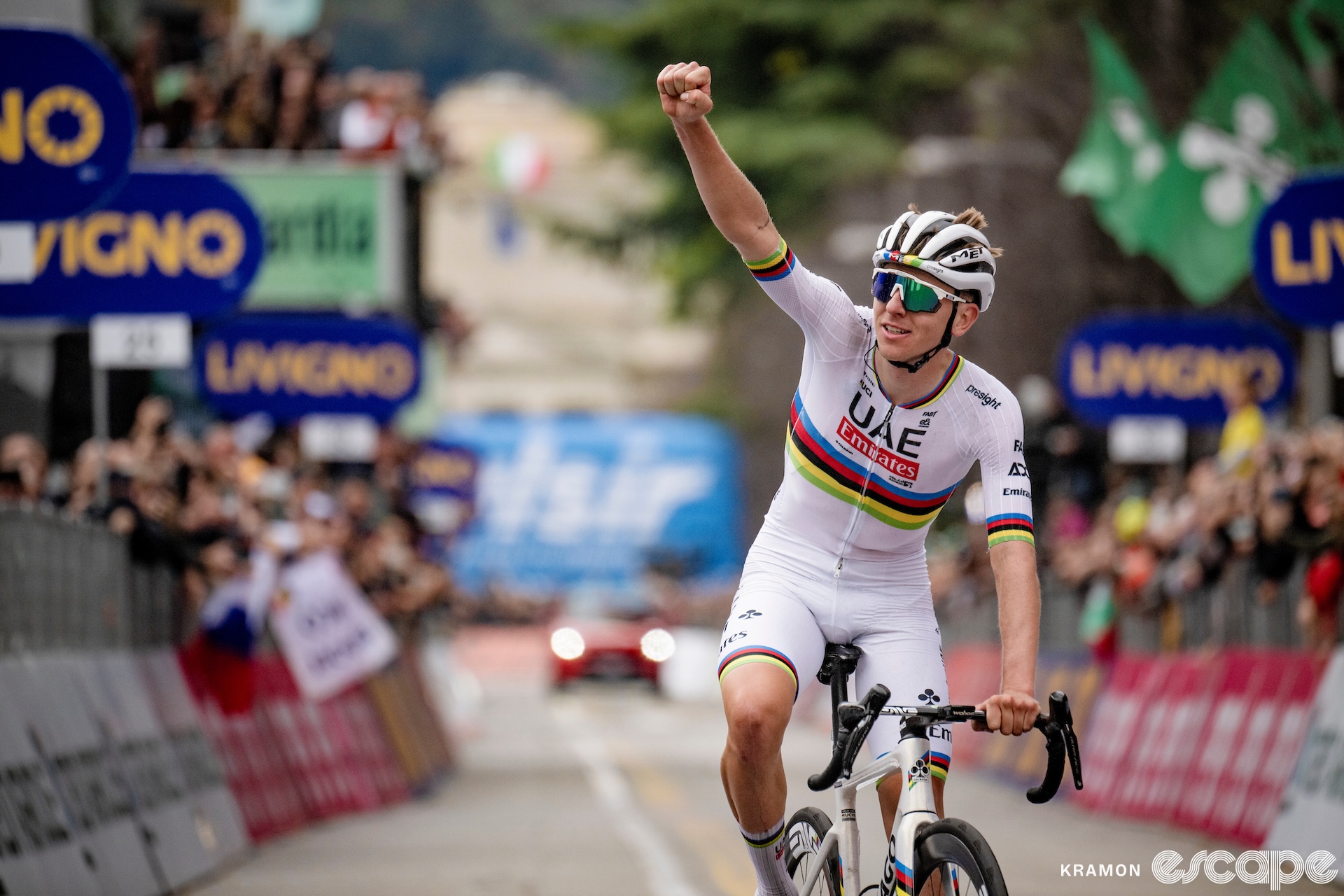Did we do a good job with this story?


Charts put the Slovenian's romp through 2024 in context of past performances and help illustrate why it is one of the top five seasons of all time.
Tadej Pogačar's season ended as it began, just in a different jersey.